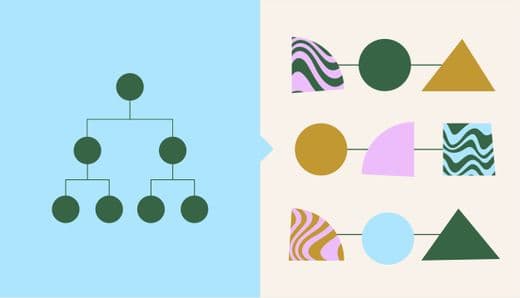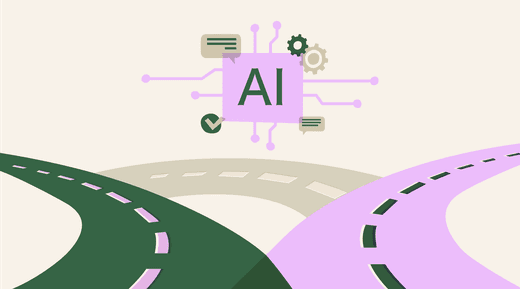Matthew Daniel |
In July, a group of 12 senior HR industry leaders gathered at Guild’s headquarters in Denver to do something that rarely fits into busy executive schedules: Reflect on the future of their roles and function.
In fact, they devoted an entire day to answering a singular question: What will HR look like in 2030?
Guided by scenario-planning exercises and workshop-style conversations, participants explored a range of possible futures — some plausible, others extreme. Over the course of the day, they considered how their roles might evolve alongside AI systems, which human capabilities will matter most in an AI-augmented workplace, and what it will take to lead organizations through the systems-level change already underway.
The result was a clearer picture of the questions HR leaders should be asking now as they prepare for the future. Here are three reflections that stuck with us.
1. ‘Business acumen’ will be the defining characteristic of successful HR leaders in the future.
Understanding how value is created — and how the workforce drives it — will separate high-performers from the rest.
One theme echoed throughout the day: The future of HR demands “business acumen” as the core HR competency. While business fluency has been growing in emphasis in recent years, there was consensus that as organizations become more complex and AI-driven, HR leaders will need to speak the language of strategy and growth with a fluency many haven’t yet been asked to develop. This wasn’t limited to CHROs, HR executives, and Human Resource Business Partners (HRBPs); this was nearly every role in HR.
Several participants suggested it may be time to rethink how future HR leaders are developed. Instead of rising through traditional HR pipelines, tomorrow’s leaders may come from within the business — rotating through functions, managing P&Ls, and gaining firsthand exposure to operational decision-making and competitive dynamics. That kind of business fluency is what will enable HR to move from a consultative role to a true strategic partner.
That shift in leadership development reflects a broader redefinition of what “business acumen” in HR actually means. For starters, it can’t be just about reading financial statements anymore, participants stressed. Today’s HR leaders must connect workforce investments to business outcomes, forecast labor needs in line with strategy, advise on AI adoption, and shape the organizational design required for what’s next.
These takeaways exemplify a key finding from recent Guild research. A Guild survey of 500 CHROs and L&D leaders revealed that approximately one in four leaders (28%) believe their L&D investments have “unknown, little, or no impact” on revenue or profit margin. At the same time, leaders who tie learning directly to their organization’s business strategy are 122% more likely than their peers to meet high-priority metrics.
2. HR will shrink in size and grow in strategic power.
Lean teams, complex systems, and new mandates will redefine HR as a transformation function at the center of business strategy.
Participants predicted a 25% reduction in HR headcount by 2030, particularly in operational areas like L&D and HR operations. What remains, they suggested, will be a leaner, more strategic function responsible for designing how people, technology, and culture intersect in increasingly automated organizations. Some predicted a convergence between HR and IT functions by 2030, as the line between human and machine work blurs. Others forecast that half of Fortune 50 Chief People Officers could soon be responsible for corporate strategy.
We asked HR leaders to reflect on what this all might look like in practice. Using a simple quadrant exercise, we had them identify which parts of HR are most likely to transform and what new responsibilities might emerge in their place. Here are the takeaways from that exercise:
HRBPs
HRBPs were seen as the function most likely to retain human responsibility, but in a very different form. HRBP will shift from operational generalist to strategic translator and systems thinker, embedded deeply in business units. As organizations grow more matrixed and AI-infused, HRBPs will need to understand how technology, ethics, and strategy intersect at the team level, participants said.
L&D
For L&D, the outlook was more radical. Many participants anticipated a significant reduction in L&D headcount, with much of the function’s traditional scope — content curation, training logistics, and compliance — being handled by AI. What’s left will be deeply human: learning design, capability building, and coaching.
Talent Acquisition
In Talent Acquisition (TA), participants expected automation to reshape practically everything: job descriptions, candidate screening, skills matching, even early-stage interviews. However, that does not mean TA will become obsolete overnight. Instead, TA will shift toward brand stewardship, equity, and experience design and areas where trust and judgment still matter.
HR Operations
HR Operations was seen as the function most likely to become fully automated. From payroll to policy enforcement, many of the transactional elements of HR Ops may soon be handled by AI systems. But participants also emphasized a new opportunity to reposition operations as the backbone of adaptability. Future HR Ops leaders might focus on infrastructure that supports hybrid work, builds transparency into data systems, and enables more fluid internal mobility, for example.
3. The next era of HR will require more judgment and less output.
Knowing what to keep human, what to delegate, and how to lead through complexity will be critical.
We asked HR leaders to rank which human capabilities will become most critical in the next era. Skills like adaptability, ethical judgment, culture shaping, and sensemaking rose to the top, signaling a move away from knowledge work and toward what one participant called “wisdom work.” In a world where AI can generate ideas, the largest premium will be placed on how those ideas are evaluated, prioritized, and implemented.
Two distinct groups completed the same exercise, and while their rankings differed, the underlying signals were clear.
Business acumen, adaptability, change leadership, and emotional intelligence ranked consistently high across both groups.
“Group 2” placed a higher emphasis on empathy and resilience than “Group 1”, perhaps reflecting the role HR will play in supporting teams through prolonged ambiguity and cultural transformation.
As one participant noted, “High performers will increasingly distinguish themselves not by doing more, but knowing what to keep human, what to delegate to Al, and how to refine machine contributions.”
It’s not an exaggeration to say that the results of this exercise could have wide-ranging implications for capability-building inside HR teams. In the very near future, skills like discernment, collaboration, and cultural stewardship will be foundational to HR.
Final thoughts
Some of the scenarios explored during the Meeting of the Minds felt extreme by design. One sparked a discussion about digital twins and AI-generated “copies” of knowledge workers, which raised questions about what happens when a company retains an employee’s intellectual output, but not the person behind it. Another prompted reflections on data ownership, creative labor, and the ethical limits of AI-generated insight. Participants drew parallels to recent SAG-AFTRA negotiations and asked: What might collective bargaining look like for white-collar workers training enterprise AI?
Of course, not every scenario will come to pass. But the questions they raise are already reshaping the role of HR. In a world where AI can replicate output but not judgment, wisdom becomes the new work. Sensemaking, ethical decision-making, and cultural stewardship are leadership capabilities that will define the next era. Guild’s Meeting of the Minds reinforced for us that the future of HR won’t be built on certainty but on the courage to lead through complexity.



